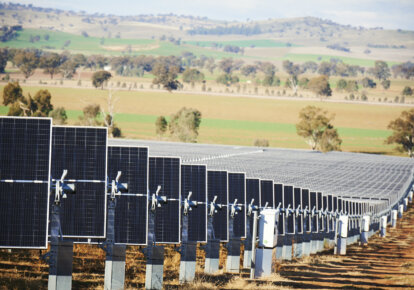Wholesale electricity pricing explained

Business electricity plans at wholesale prices
Wholesale electricity pricing helps your business take control of your power costs, by paying for power at wholesale market prices.
Say goodbye to fixed-rate electricity prices with no flexibility to change your rate, and hello to a pricing structure that puts you in the driver’s seat.
What is the wholesale electricity price?
The wholesale electricity price (also referred to as the ‘spot price’) is the price of electricity in the National Electricity Market (NEM).
All electricity passing through our interconnected electricity network (often referred to as ‘the grid’) is bought and sold in the wholesale market.
What is the wholesale electricity market (NEM)?
‘The wholesale market’ or National Electricity Market (NEM) is the power system and associated markets that connect the east coast of Australia – Queensland, New South Wales, ACT, Victoria, South Australia and Tasmania. Each state is its own region (except for the ACT, which is counted as part of New South Wales) and has its own spot price for electricity.
Beginning operation in 1998, the NEM is a spot market where supply and demand are matched in real-time.
The Australian Electricity Market Operator (AEMO) forecasts electricity demand, then generators (such as wind farms or coal fired power stations) submit offers of generation amounts and price (bid stacks). Once there is enough generation to meet demand, the highest price submitted becomes the spot price, and all generators are paid the spot price.
The spot price is determined every five minutes. AEMO uses the spot price as the basis for the settlement of financial transactions – the price wholesalers or retailers pay – for energy traded in the market.
How does wholesale electricity pricing work?
- Energy retailers buy their electricity from the same wholesale electricity market, where prices fluctuate and are set every 5 minutes.
- The wholesale energy price is the price a retailer (such as Flow Power) pays to obtain electricity for you.
How are wholesale prices calculated?
As we mentioned above, wholesale electricity prices are set every 5 minutes by the Australian Energy Market Operator (AEMO).
Generators bid on how much energy they are willing to provide to the market and at what price, and the spot price is determined by the intersection of supply and demand.
To learn more about how wholesale prices are calculated read our article on The NEM, bid stacks and five-minute settlement.
Can businesses benefit from choosing wholesale electricity pricing?
In short, yes – wholesale prices can be lower than fixed-price contracts.
You could benefit if:
- you’re comfortable with month-to-month price variation
- you put in place a strategy to mitigate price risk (i.e demand response, load management or financial products)
Not sure if wholesale pricing is right for your business? Our electricity specialists are here to help you consider your options – get in touch.
Wholesale electricity pricing cost benefits
A wholesale electricity contract helps your business to take advantage of the energy market when the price is at its lowest (often during business hours) and switch off when the price spikes (typically a few hours in the morning and the afternoon).
If you can shift energy intensive operations to low price periods, and reduce your energy usage during high price periods, you can actively reduce your electricity bill.
Is wholesale electricity more sustainable?
When prices are lowest, it’s typically due to large amounts of clean, low-cost renewable energy being supplied to the grid.
By switching to a wholesale pricing structure and using energy when prices are low, you’re likely using greener electricity, thanks to a higher proportion of renewable energy in the fuel mix of the grid.
Additionally, with more renewable energy being supplied to the grid, there’s less demand for fossil fuel generators to contribute to the energy mix. This means low price periods also often correlate with lower carbon intensity.
Using wholesale electricity during low price periods can lead to benefits such as:
How does using wholesale electricity benefit infrastructure?
When prices are high, demand is also high, meaning reduced supply is putting pressure on the grid. This can lead to blackouts in periods of extreme demand.
By powering your operations with a wholesale electricity energy plan and load shifting from these high demand periods, your business can:
How can businesses respond to wholesale electricity price signals?
Responding to price signals from the wholesale market is known as demand response – and it’s at the core of what we do at Flow Power.
Demand response involves electricity customers deliberately changing their usage in response to conditions of the market, helping avoid the sting of high prices and supporting the stability of our shared grid.
Knowing when to power ahead or power down can be a challenge for businesses, but Flow Power makes demand response simple. Our range of intelligent tools and dedicated account support helps customers take control of their energy usage, shape the price of their bills and actively improve carbon efficiency.
Stay up to date with the latest from the energy market

If you’d like to learn more about purchasing energy on the wholesale market, our business electricity specialists are ready to assist you.
If you’re an existing Flow Power customer simply reach out to your dedicated Client Solutions Manager.
Or, get in contact with the Flow Power team:








